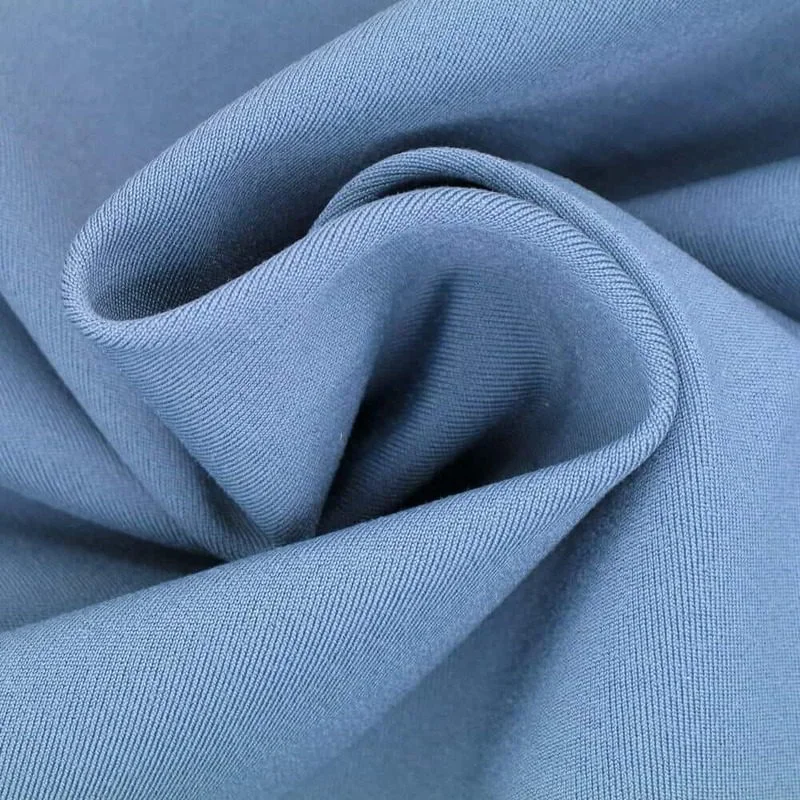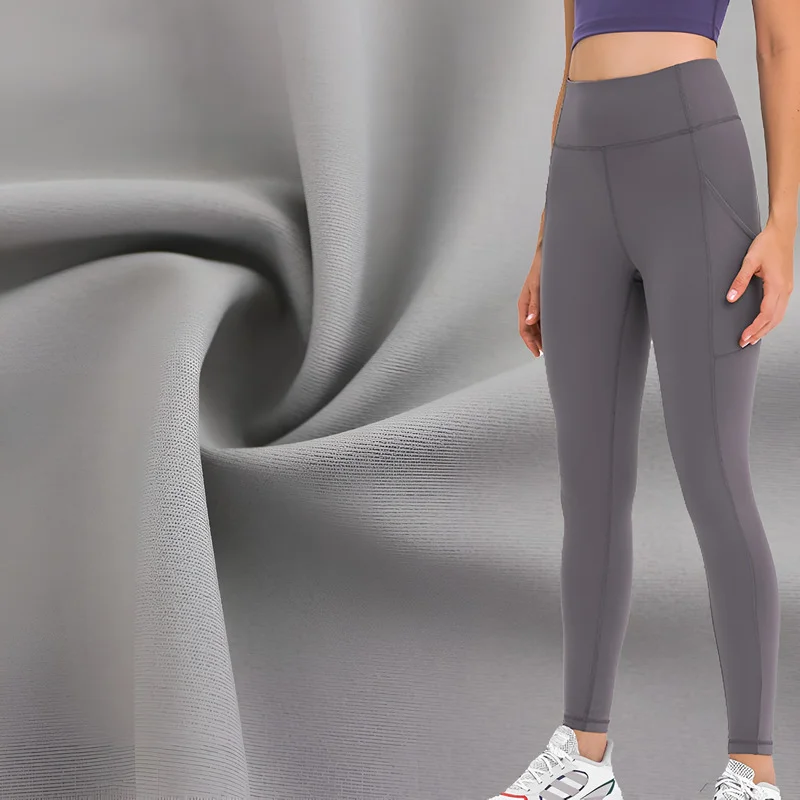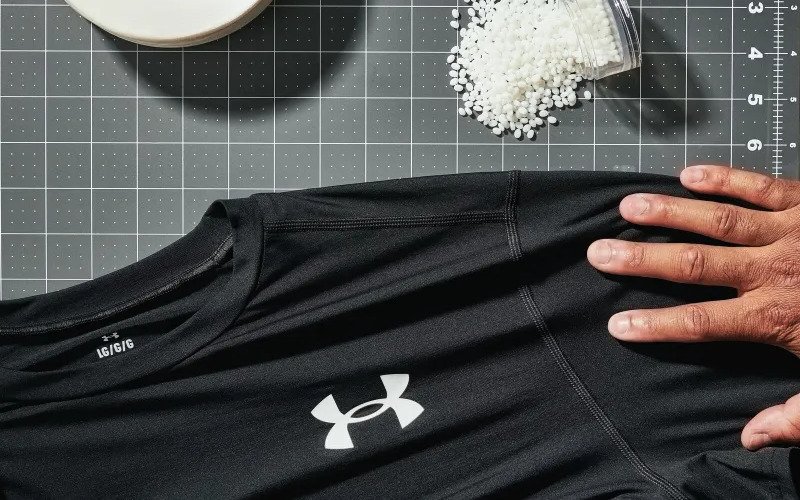What Is Spandex? Your Easy Guide To This Stretchy Fabric
Have you ever wondered about the stretchy clothes you wear? Many clothes, from your favorite sports gear to comfy leggings, have a special material in them. This material is called spandex. This article will explain what spandex is in easy-to-understand words.
Spandex fabric is a special kind of fabric made by people. Its main superpower is that it’s super stretchy. It’s a synthetic fabric. In this guide, we’ll use simple words and clear explanations. You don’t need to know anything about fabrics to understand this. By the time you finish reading, you’ll know all about spandex!
1. What exactly is spandex?
1.1 Spandex: The super stretchy material
Spandex is a material created by humans, famous for its incredible ability to stretch. Its main job in clothes is to let them stretch when we move and then go back to their original shape. Think about your favorite leggings or gym shirt. Spandex helps them stretch with you when you run, jump, or bend, and then they don’t look all saggy afterwards.
It’s so stretchy, it can stretch up to 5-8 times its original length and still snap back to normal! Imagine a small rubber band stretching really far and then shrinking back. Many clothing brands we help at Packlove, especially those making sports clothes, use spandex because of this amazing stretchability and elasticity. These polymer-based fibers are what give it this power.

1.2 Is spandex natural or man-made?
Spandex is not something that grows on plants like cotton, or comes from animals like wool. It’s a man-made or synthetic fiber. People make it in factories using special chemicals. Knowing that spandex is man-made helps us understand how it behaves, like when choosing the right kind of label for clothes made with it.
1.3 Spandex has other names: Elastane and Lycra
You might hear people call spandex by other names, like ‘elastane’ or ‘Lycra’. Don’t worry, they’re all talking about the same super stretchy stuff. Elastane is the common name for this stretchy fiber in many parts of the world, like Europe. You’ll often see ‘elastane’ on the care tag of your clothes.
Lycra is a famous brand name for spandex, made by a company called DuPont. It’s like how ‘Kleenex’ is a brand name for tissues, or ‘Band-Aid’ is a brand name for sticky bandages. Lycra is just one make of spandex. At Packlove, when people ask for labels for ‘Lycra’ pants or ‘elastane’ tops, we know they mean clothes with spandex.
2. How is spandex made?
2.1 The basic building blocks
Making spandex is a bit like baking a special cake – it starts with some special chemical ingredients. One of the main ingredients is a kind of liquid plastic-like stuff called polyurethane. This ‘plastic’ is special because it can be made very, very stretchy. These building blocks are chosen for their ability to create stretch.

2.2 From a liquid to stretchy threads
These chemical ingredients are mixed together to make a thick, syrupy liquid. Then, this liquid is pushed through a special tool with tiny, tiny holes, like a showerhead or a spider spinning its web. This turns the liquid into long, thin, stretchy threads.
These tiny threads are the actual spandex fibers. They are then often twisted together with other threads like cotton or polyester to make the yarn that’s used for our clothes. There’s a special way they dry these threads quickly using warm air.
3. Why do we use spandex so much?
3.1 It stretches and bounces back!
The biggest reason everyone loves spandex is its amazing stretch. It doesn’t just stretch; it also snaps right back to its original size and shape. This is super important because it means your clothes don’t get all baggy or stretched out after you wear them. This ‘bounce-back’ quality, often called elastic recovery, makes clothes really comfortable.
They move when you move, whether you’re playing sports or just reaching for something on a high shelf. We see so many clothes at Packlove, from dance outfits to comfy everyday jeans, that rely on spandex to keep their shape and feel good. This elasticity and stretchability are key.
3.2 Strong and lasts a long time
Even though spandex fibers are fine and light, they are pretty strong. Clothes with spandex can often handle a lot of wear and washing. They tend to resist tearing and those fuzzy little balls (called pills) better than some other fabrics. This means clothes with spandex can be very durable and last longer.

3.3 Feels light and smooth
Spandex can be made into very fine threads, so fabrics with spandex often feel lightweight to wear, not heavy or bulky. Many spandex blends also feel smooth and soft against your skin, which adds to the comfort. This smooth texture is great, especially for things like heat transfer labels that Packlove offers. These are ‘tagless’ labels applied directly to the fabric using heat and pressure, so they sit nicely without scratching.
3.4 Doesn’t get damaged easily by sweat or body oils
Good news for active people! Spandex is pretty tough against things like sweat and body oils. Even lotions or sunscreens don’t damage it as easily as they might damage other fabrics. This makes it resistant to damage from body oils and sweat, perfect for your gym clothes, running gear, and swimsuits that see a lot of sweat and sunscreen!
3.5 Dries fast
Spandex doesn’t like to hold onto water. It’s not like a sponge. Because it doesn’t soak up much water (it’s water-resistant in this way, but not waterproof), clothes with spandex are quick-drying. So, if you get sweaty or your swimsuit gets wet, it won’t stay damp for long. This is why it’s so common in athletic wear, activewear, and swimwear.
4. Are there any problems with spandex?
4.1 It doesn’t let air pass through well on its own
On its own, spandex isn’t great at letting air flow through (it has low breathability). If clothes were made of pure spandex, you might feel a bit hot and clammy because it traps heat and moisture close to your skin.
That’s why you usually find spandex mixed with other fabrics like cotton or polyester. These other fabrics in the blended fabric help the material ‘breathe’ better and wick moisture away. Knowing about these blends helps us at Packlove give good advice, for example, on what type of care label will work best and stay comfortable on a blended fabric.
4.2 Be careful with heat!
Spandex and high heat are not friends. Too much heat can damage the stretchy fibers, making it heat sensitive. This means you need to be careful with hot water when washing, super hot settings on your clothes dryer, and especially hot irons.
Heat can make spandex lose its amazing ‘bounce-back’ ability forever, or even cause the fibers to melt or become brittle. We’ll talk more about how to care for spandex later.
4.3 Spandex and the environment
Making and using any fabric has some effect on the Earth, and spandex has a few things to consider regarding its environmental impact.
- Non-renewable source: Spandex is made from petroleum-based ingredients that come from oil, which is a non-renewable resource (we can’t grow more of it quickly). Once we use it, it’s gone.
- Microplastics: When we wash clothes made with spandex (and other man-made fabrics), tiny little bits of plastic, called microplastics (or microfibers), can break off. These can get into our water systems.
- Not biodegradable: And when spandex clothes get thrown away, they don’t break down and disappear into the earth quickly like an apple core. Because it’s a type of plastic, it is not biodegradable and can sit in landfills for hundreds of years.
Just like people are thinking more about eco-friendly packaging, which we at Packlove are happy to help with, it’s also good to know about the fabrics themselves.
5. Where can you find spandex?
5.1 Clothes that fit snugly
You’ll find spandex in so many clothes, especially form-fitting clothes and types of apparel that need to fit your body well and let you move freely.
- Sports Clothes (Athletic wear/Activewear): Think of your stretchy leggings for yoga, your sports bra that gives good support, or those bike shorts that don’t ride up. Spandex helps with maximum movement.
- Swimwear: Needs to be form-fitting so it doesn’t drag in the water, and it dries quickly.
- Stretchy Jeans and Pants: Even your jeans might have a little spandex to make them comfier and fit better.
- Socks and Underwear: For a snug fit and to prevent slipping.
- Fitted Tops and Dresses: Helps clothes cling gently to the body’s shape.
5.2 Not just for clothes!
Spandex’s stretchiness is useful in other areas too:
- Medical Uses: Doctors sometimes use special stretchy bandages or medical compression garments like support stockings made with spandex to help with swelling or support injured areas.
- Covers for Furniture: Have you seen those stretchy furniture covers that make an old sofa look new? They often use spandex to fit tightly.
- Cool Fact: Motion Capture Suits: In movies and video games, actors sometimes wear special motion capture suits with sensors. These suits are often made with spandex so they fit like a second skin!

6. How to take care of your spandex clothes
To keep your spandex clothes in great shape, follow these simple care tips:
6.1 Washing
- Use cold or lukewarm water. High heat can damage the fiber.
- Select a gentle cycle on your washing machine, or hand wash for the best results.
- Use a mild detergent.
6.2 Drying
- Air drying is best. Hang your clothes or lay them flat to dry.
- If you must use a dryer, choose the lowest heat setting or an “air fluff” (no heat) cycle.
6.3 What to avoid
- Avoid chlorine bleach, as it will destroy the spandex fibers.
Do not use a hot iron. If ironing is necessary, use the coolest setting and place a protective cloth between the iron and the fabric. Always check the garment’s care label first.
7. Spandex and our earth
7.1 The story of spandex
Let’s quickly look at the whole journey of spandex and how it touches our planet. Remember, it’s made from oil, a non-renewable resource. And when we wash it, tiny microplastics can go into the water. Finally, when we’re done with it, it doesn’t rot away easily in landfills because it’s a type of plastic. This lifecycle impact is important to understand.
7.2 What are companies trying to do?
The good news is that some people and companies are trying to make things better and look for sustainable alternatives. For example, some companies are now starting to make new spandex from old spandex or other recycled plastic materials.
It’s like giving the plastic a second life. This is often called recycled spandex. They are also looking for ways to make spandex using cleaner energy or fewer harmful chemicals. At Packlove, we also see brands wanting to be more planet-friendly, for example by choosing recycled materials for their packaging.
7.3 Easy things we can all do to help a bit
- Wash less: Wash your stretchy clothes a bit less often – if they aren’t smelly or dirty, maybe you can wear them again before washing.
- Gentle washing: Wash them in cold water. Some people use special washing bags that can catch some of those tiny plastic bits.
- Choose durable clothing: Try to choose good quality clothes that will last a long time, so you don’t have to buy new ones so often.
- Proper disposal: When your clothes are really worn out, see if there’s a place near you that recycles old clothes (textile recycling). Or if they’re still good, donate them.
8. The history of spandex
8.1 When was it first made?
Spandex is not super old. It was first invented around the 1950s – that’s about 70 years ago, when your grandparents might have been young. This marks the beginning of the history of spandex.
8.2 Who invented it?
A team of scientists worked on it, but a big company called DuPont, and one of their scientists named Joseph Shivers, are famous for creating the first really successful spandex. DuPont called their spandex ‘Lycra’.
8.3 Why did they make it?
Back then, they used rubber to make things stretchy. But rubber was heavy, could be damaged by body oils, and didn’t always last long. Scientists wanted to find an alternative to rubber that was lighter, stronger, stretchy like rubber, but even better and more comfortable for clothes.
8.4 The name “spandex” is like a puzzle
Here’s a fun little secret about the spandex name origin: ‘Spandex’ is a word puzzle. It’s made by mixing up the letters of the word ‘expands’. Pretty clever, right?
8.5 Where was it first made?
This super stretchy stuff was first made in the United States.
9. Your spandex questions answered
9.1 Is spandex comfy to wear?
Yes, most of the time it’s very comfortable. Because spandex stretches, it moves with your body, so clothes don’t feel too tight or stiff. When it’s mixed with soft fabrics like cotton, it makes clothes feel even nicer.
9.2 Will spandex shrink if I wash it?
Spandex itself usually doesn’t shrink much if you use cold water for wash care. But, if spandex is mixed with another fabric like cotton, that other fabric might shrink a little, especially in hot water. Avoid high heat!
9.3 Is spandex waterproof?
No, spandex isn’t waterproof like a raincoat. It doesn’t soak up a lot of water (that’s why it dries quickly and is somewhat water-resistant), but water can still pass through.
9.4 Is Lycra a better type of spandex?
Lycra is a very famous brand name for spandex. ‘Spandex’ and ‘elastane’ are general names. Lycra is known for good quality, but other companies make good spandex too. They are all the same basic stretchy stuff.
9.5 How much spandex is usually in stretchy clothes?
It depends! For a little comfort stretch, maybe 2% to 5% spandex. For super stretchy things like leggings or swimwear, there can be 10% to 25% spandex, or more. The percentage of spandex varies based on the needed stretch in the fabric blend.
9.6 Does spandex keep you warm or cool?
Spandex itself doesn’t have good breathability, so if there’s a lot of it, it can feel warm by trapping heat. It doesn’t provide warmth like wool. When mixed with fabrics like cotton, the whole fabric can feel cooler. So, coolness or warmth depends on the blend.
10. Labels and packaging for your stretchy spandex clothes?
10.1 Clothes that stretch need labels that can move too!
If you make or sell clothes with spandex, remember the labels! Stretchy clothes need labels for stretch fabric so they don’t pucker or tear when the fabric moves. From our experience at Packlove helping brands, choosing the right label for stretchy fabric is important for comfort and looks.
10.2 Things like heat transfer labels can work great on spandex clothes.
One great choice Packlove offers is Heat Transfer Labels. These are like ‘tagless labels’ that are printed right onto the fabric. They stretch with the clothes and don’t itch! Want to know more? Check out Heat Transfer Labels at Packlove for your stretchy clothes.
10.3 Shipping stretchy clothes? Poly mailers might be a good choice for packaging.
And if you’re sending out those awesome stretchy leggings or tops for apparel shipping, poly mailers (lightweight, durable plastic bags for shipping) are a good way to pack them. They are light, strong, and protect the clothes. You can find different Poly Mailers for your shipping needs at Packlove.
Read more:
So, now you know! Spandex, also called elastane or Lycra, is that amazing man-made stretchy fabric that makes our clothes stretchy and comfy. It’s in everything from sports gear to jeans. It’s strong and bounces back, but we need to be careful with heat and think about our planet when we use it.
Knowing a bit more about spandex helps us understand our clothes better. Now you can look at a label and know what makes your favorite stretchy top so special. Got more questions about fabrics or need cool labels or packaging for your own clothing creations? The team at Packlove is always happy to help. Visit us to learn more!






















